The origins, meaning and symbolism of the lesbian pride flag
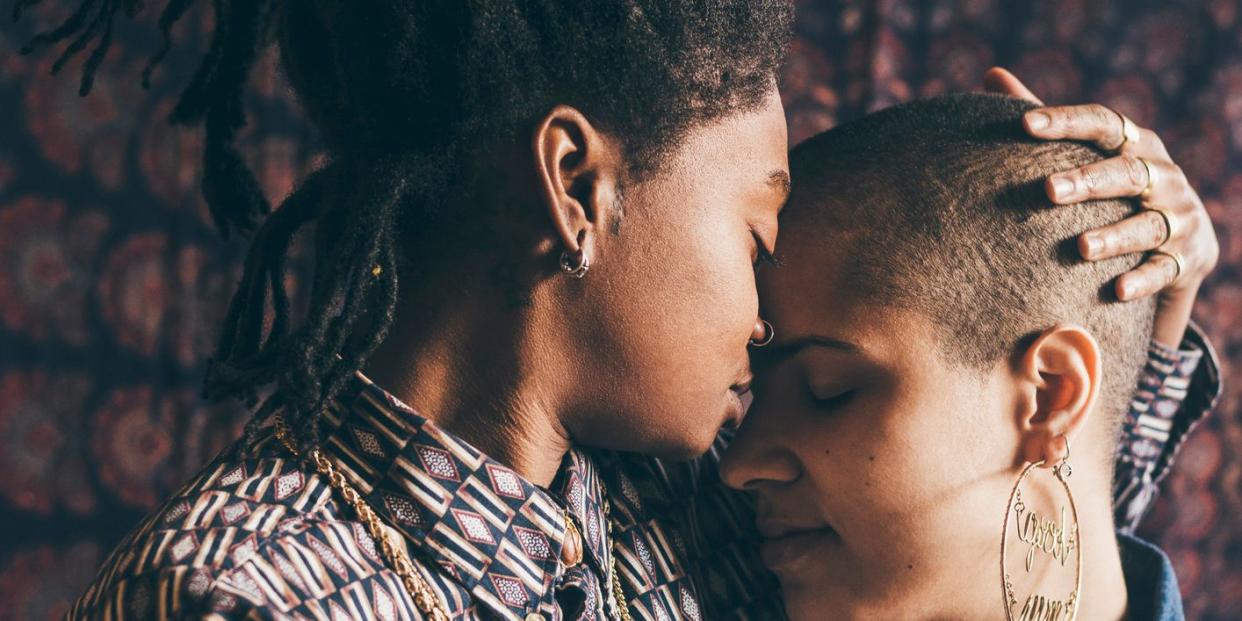
You’ll of course see the rainbow flag flying proudly at Pride celebrations around the world – as well as many others that represent different sections of the LGBTQ+ community. And while some lesbians feel represented by the rainbow flag, there is certainly a lesbian pride flag – or flags – to represent this group (or as some would argue, groups within the group), each with different meanings. In fact, there are literally hundreds of variations.
Here's a whistle stop tour of some of the most well-known, how they've evolved, and what each flag (roughly) represents.
Lesbian flag
What is the most widely-used lesbian pride flag?
There is no one official lesbian flag, but the one below has become increasingly common over the last decade.
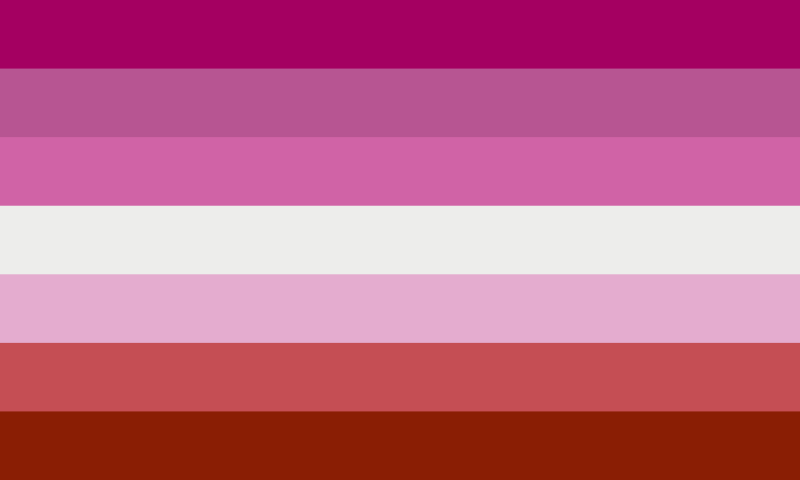
Featuring shades of pink, white and red, it is commonly used to represent lesbians – although some feel it represents only 'lipstick' or 'femme' lesbians. This likely stems from its original version. Created in 2010, it first featured a lipstick mark in its top left hand corner. While some still embrace the first version, others argue it and its subsequent version are butch-phobic, leading to variations in colour.

Some lesbians also oppose use of any flag revised from the lipstick original because its designer Natalie McCray reportedly wrote racist, biphobic and transphobic comments on a since-deleted blog.
The most recent lesbian flags
Just posting these meanings again so I can pin it pic.twitter.com/oyRHzQgbC9
— Emily Gwen 💗 (@diabolicdyke) June 20, 2019
The above flag, which is inclusive of butch women plus trans and gender non-conforming folk, gained popularity after it was designed and shared to social media by Twitter user Emily Gwen last year.
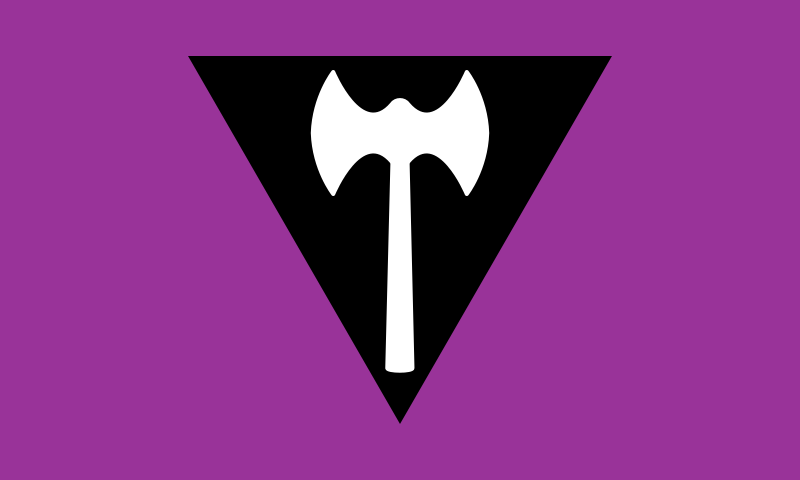
What is the oldest lesbian flag?
Although some feel this flag has been co opted by 'trans exclusionary radical feminists' in recent times, one of the oldest lesbian flags dates back to 1999 and was in fact created by a cis man: gay graphic designer Sean Campbell.
Different designs of this flag exist, but it usually shows a black upside triangle, repurposing a symbol lesbians were forced to wear by Nazis in World War II.
Inside the triangle is a ‘labrys’ – also known as a double bit axe – a symbol relating to lesbian feminism and strength.
Why is purple a common colour in lesbian flags?
The backdrop of the labrys flag usually features the colour purple, or lavender, long associated with lesbianism, and also the colour of violets – a flower historically used by lesbians to indicate themselves to other lesbians.
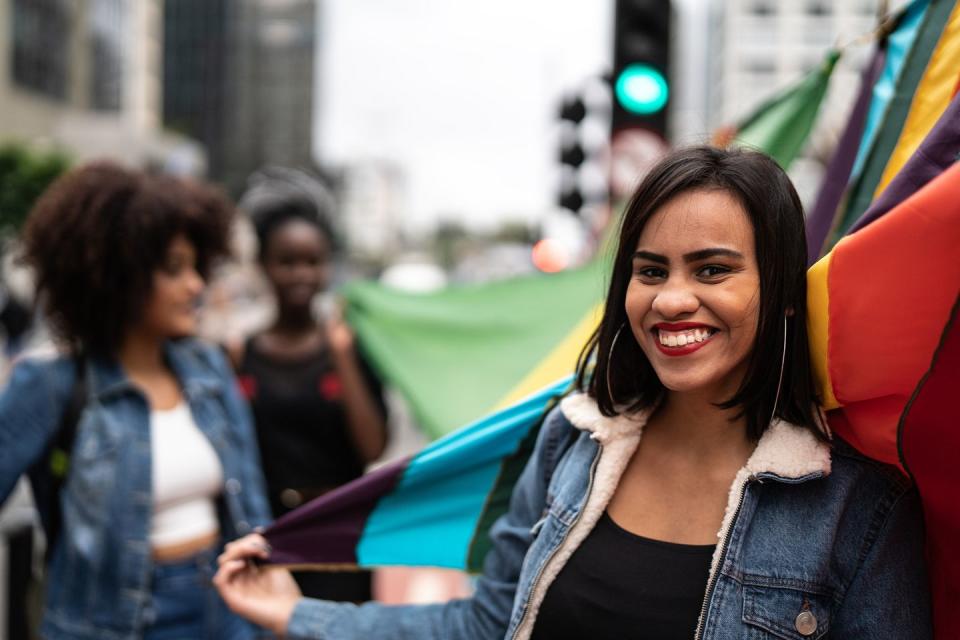
Purple also represents lesbians in the iconic rainbow flag, created by the late San Francisco artist Gilbert Baker in 1978 and featuring seven colours.
An updated version of the rainbow flag – including the colours black and brown, to represent people of colour and the fight against racism – was introduced by Philadelphia-based LGBTQ+ activists in 2017.
Last year it was revised again into a 'Progress Flag' by Daniel Quasar. As explained via his Kickstarter, the five extra stripes represent "trans individuals (light blue, light pink, white), marginalised POC communities (brown, black), as well as those living with AIDS, those no longer living, and the stigma surrounding them (black).”

“Bisexual people, trans people, intersex people and people of colour have too often been all but invisible within the LGBTQI community. When we’re not erased completely, we’re vilified and attacked. Despite featuring prominently in the acronym, lesbians too have been made to feel unwelcome and uncomfortable in 'gay' spaces, where unchecked misogyny is allowed to fester. That’s just one of the reasons that having our own colours is important," says Carrie Lyell, editor of DIVA magazine, Europe’s best-selling magazine for lesbians and bi women.
“The rainbow flag is wonderful, but it is empowering to fly your own flag too. It helps those who are most marginalised to find their safe spaces, find belonging, and find their tribe.”
Meg Cale, the former LGBTQ+ rights activist behind website EveryQueer.com, says, “The rainbow flag is a universally recognised symbol of queerness that is helpful in identifying queer-friendly people and places. Lesbians have had several variations of flags over the years. None of them have caught on in the way the Pride flag or the trans flags have caught on.
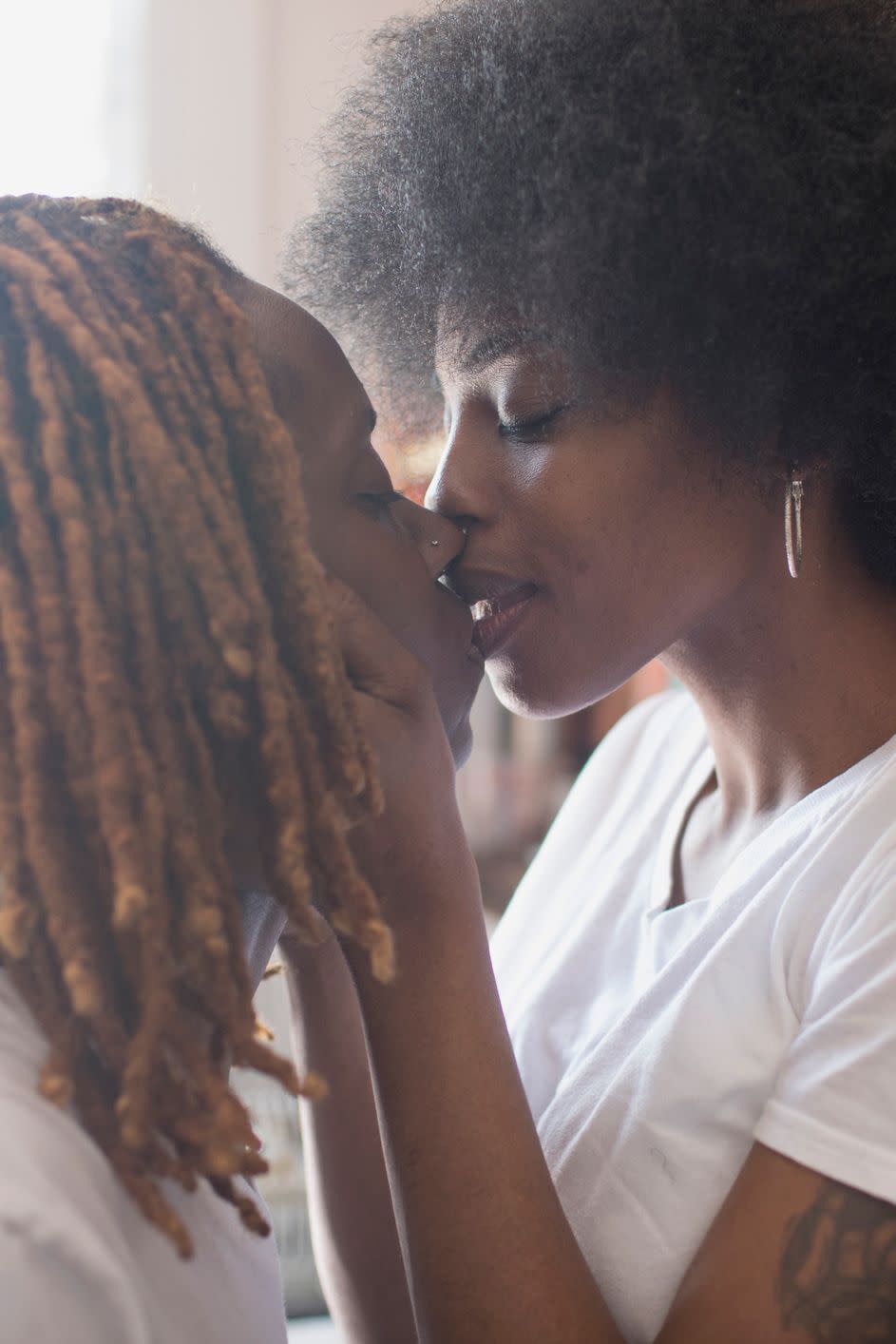
“I find the ‘lipstick lesbian’ flag to be offensive in its many shades of pink and because the term ‘lipstick lesbian’ was used as a means of marketing lesbian porn to cis/straight men in the late 70s and early 80s. At the time lesbians were stereotyped as masculine and unappealing to the largely male audience, so the porn industry started using ‘lipstick lesbian’ on the packaging to identify femme-on-femme pornography.
“Unfortunately, there was very little lesbian representation in the media at the time and some femme-presenting lesbians started self-identifying as ‘lipstick lesbians’. In the 90s and early 00s ‘lipstick lesbian chic’ became a trend in media where feminine-presenting lesbians were pushed forward as more ‘normal’ than their gender non-conforming counterparts in the community.
“At the time, gender variation was not as accepted in mainstream media. During this period of time, the term ‘lipstick lesbian’ became part of popular vernacular when it was featured on an episode of Ellen. I self-identify as femme because for me, I’m not feminine-presenting because society tells me to, but because my gender expression most accurately reflects my perception of self. The history of the term lipstick lesbian and the eye-roll worthy multi-pink flag makes me feel like that particular identity is used as a means of straight-washing a queer identity and phenomenon.
“[But] I think symbology expands and changes as cultures and society changes. If new flags, or more inclusive versions of our flags make people feel more seen and affirmed I’m all for it. I’d love to see a flag for queer women that I can identify with.”
SUBSCRIBE HERE to have Cosmopolitan delivered to your door.
Like this article? Sign up to our newsletter to get more articles like this delivered straight to your inbox.
You Might Also Like

